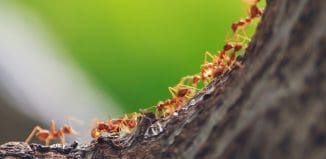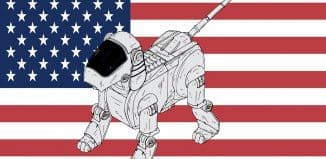Humanoid Robots Will Soon Work For Airbus
This post is also available in:  עברית (Hebrew)
עברית (Hebrew)
Airbus Group has just launched a Joint Research Programme (JRP) in cooperation with the Joint Robotics Laboratory (JRL) – a collaborative effort between Japan’s Intelligent Systems Research Institute and the French National Centre for Scientific Research – to bring humanoid robots to aviation manufacturing.
Due to the unique, specialised, and varied nature of the tasks in aviation manufacturing, the robots involved must display an impressive set of capabilities.
“For instance, robots must be capable of navigating through narrow spaces such as fuselages, and executing complex tasks from a variety of positions. In short, the manufacturer needs humanoid robots that can make human movements such as kneeling or leaning, and that can perform more sophisticated functions, such as screwing or torqueing,” explains JRP leader Adrien Escande.
JRL Director Abderrahmane Kheddar and the JRL team have been working for over a decade to create a world where such robots are not the stuff of fiction, but of reality.
“By combining Japanese expertise in hardware and robotics along with advanced French knowledge of mathematics and algorithms, we made encouraging initial progress in fields such as robot design and haptics, or tactile perception,” says Kheddar.
JRL researchers have already achieved success in tailoring multi-contact locomotion for the aviation industry and in having these robots perform simple tasks, like delivering objects to specific locations. Now, they are working on expanding the sets of tasks and improving the precision and intricacy of robots’ movements.
To improve the latter, the team is focusing on planning and robot control. “To illustrate what this means, try to imagine a rock-climber,” says Escande. “To take the next step on a rock face, they must think ahead by identifying possible foot and handholds, and by deciding which movements to make, and in what sequence. This is the planning function. Then there is the control function, which enables the climber to adapt their movements in real-time based on uncalculated events, such as a slip or a gust of wind. We are currently using numerical optimization techniques and advanced algorithms to improve capacity in both of these areas.”
To expand the set of tasks robots can perform, the team is focusing their efforts on robot-learning. They are trying to teach machines to teach themselves new tasks. For example, in the project RoboHow – another JRL initiative – robots were taught to load paper into a printer or how to bake a pizza by reading instructions on the Web, much like regular humanoid humans.
This work has the potential to radically alter the manufacturing landscape, and for the better. It could free human workers from the last taxing, repetitive, and dangerous tasks to focus on those requiring creativity and thinking – something robots so far don’t possess.





























